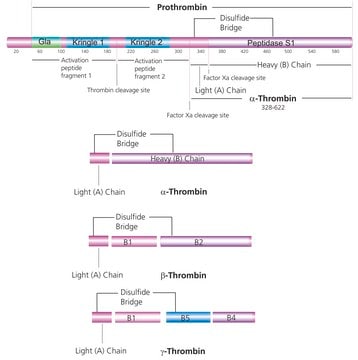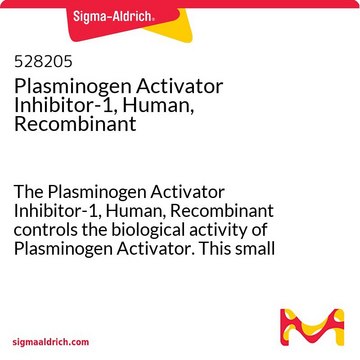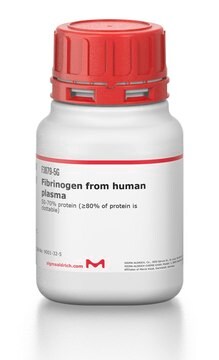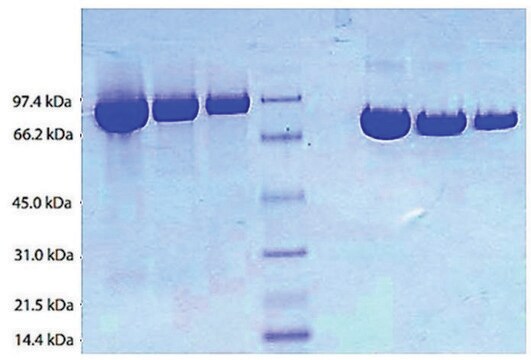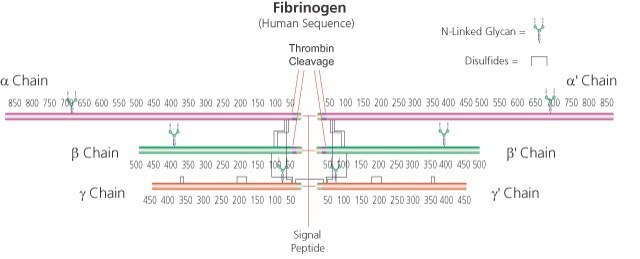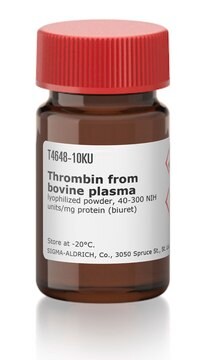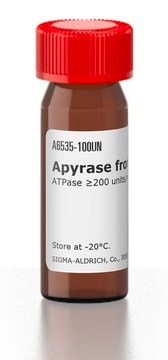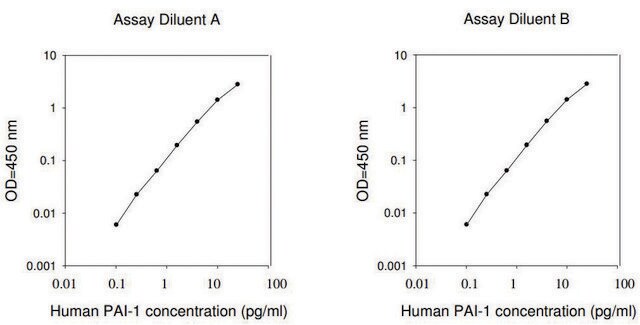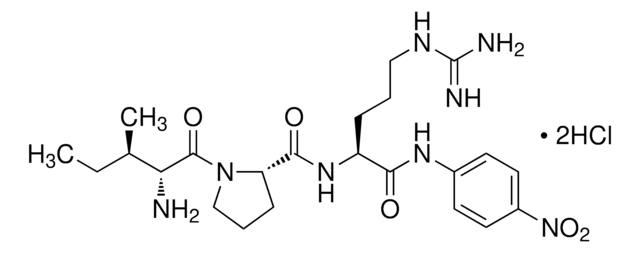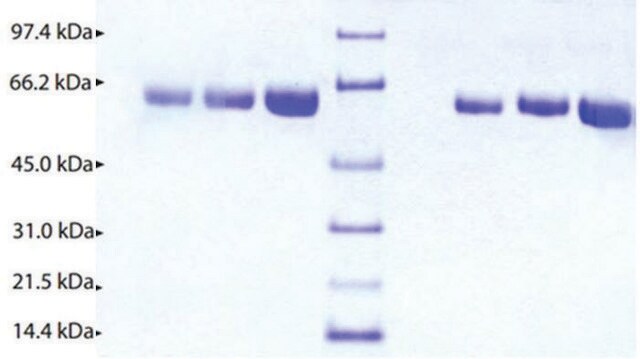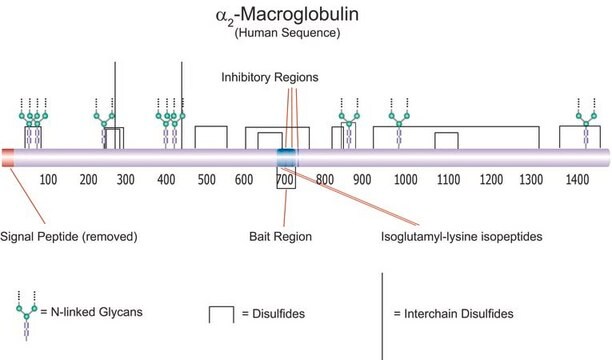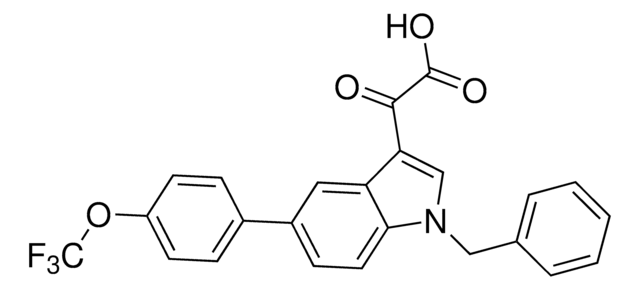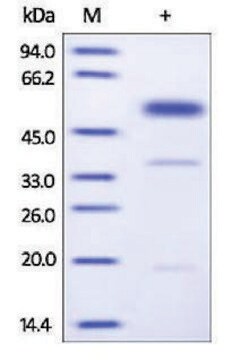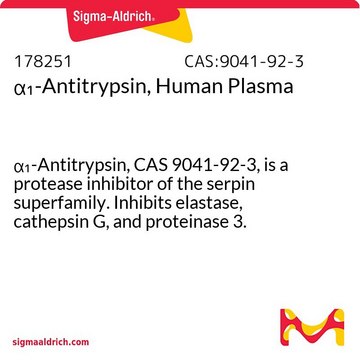A8111
Plasminogen activator inhibitor 1 (PAI-1)
≥200,000 units/mg protein, lyophilized powder, ≥90% (SDS-PAGE)
Synonyme(s) :
PAIE, PLANH1, Plasminogen activator inhibitor, β-migrating endothelial cell-derived type, Serpin E1 PAI-1, Serpine 1
About This Item
Produits recommandés
Nom du produit
Plasminogen activator inhibitor 1 (PAI-1) human, recombinant, expressed in E. coli, ≥90% (SDS-PAGE)
Produit recombinant
expressed in E. coli
Niveau de qualité
Essai
≥90% (SDS-PAGE)
Forme
lyophilized powder
Activité spécifique
≥200,000 units/mg protein
Poids mol.
~43 kDa
Solubilité
water: 0.1 mL, clear, colorless
Numéro d'accès UniProt
Conditions d'expédition
dry ice
Température de stockage
−20°C
Informations sur le gène
human ... SERPINE1(5054)
Vous recherchez des produits similaires ? Visite Guide de comparaison des produits
Description générale
Application
- as an inhibitor of pro-brain-derived neurotrophic factor (proBDNF) in radioimmunoprecipitation assay (RIPA) in peripheral blood and lymphocytes
- to block plasmin activation in mice infected with C. albicans hyphae
- to test its effect on neurite growth in neurons
Actions biochimiques/physiologiques
Définition de l'unité
Forme physique
Reconstitution
Remarque sur l'analyse
Code de la classe de stockage
10 - Combustible liquids
Classe de danger pour l'eau (WGK)
WGK 1
Point d'éclair (°F)
Not applicable
Point d'éclair (°C)
Not applicable
Faites votre choix parmi les versions les plus récentes :
Déjà en possession de ce produit ?
Retrouvez la documentation relative aux produits que vous avez récemment achetés dans la Bibliothèque de documents.
Les clients ont également consulté
Articles
Lipid Induced Insulin Resistance
Notre équipe de scientifiques dispose d'une expérience dans tous les secteurs de la recherche, notamment en sciences de la vie, science des matériaux, synthèse chimique, chromatographie, analyse et dans de nombreux autres domaines..
Contacter notre Service technique